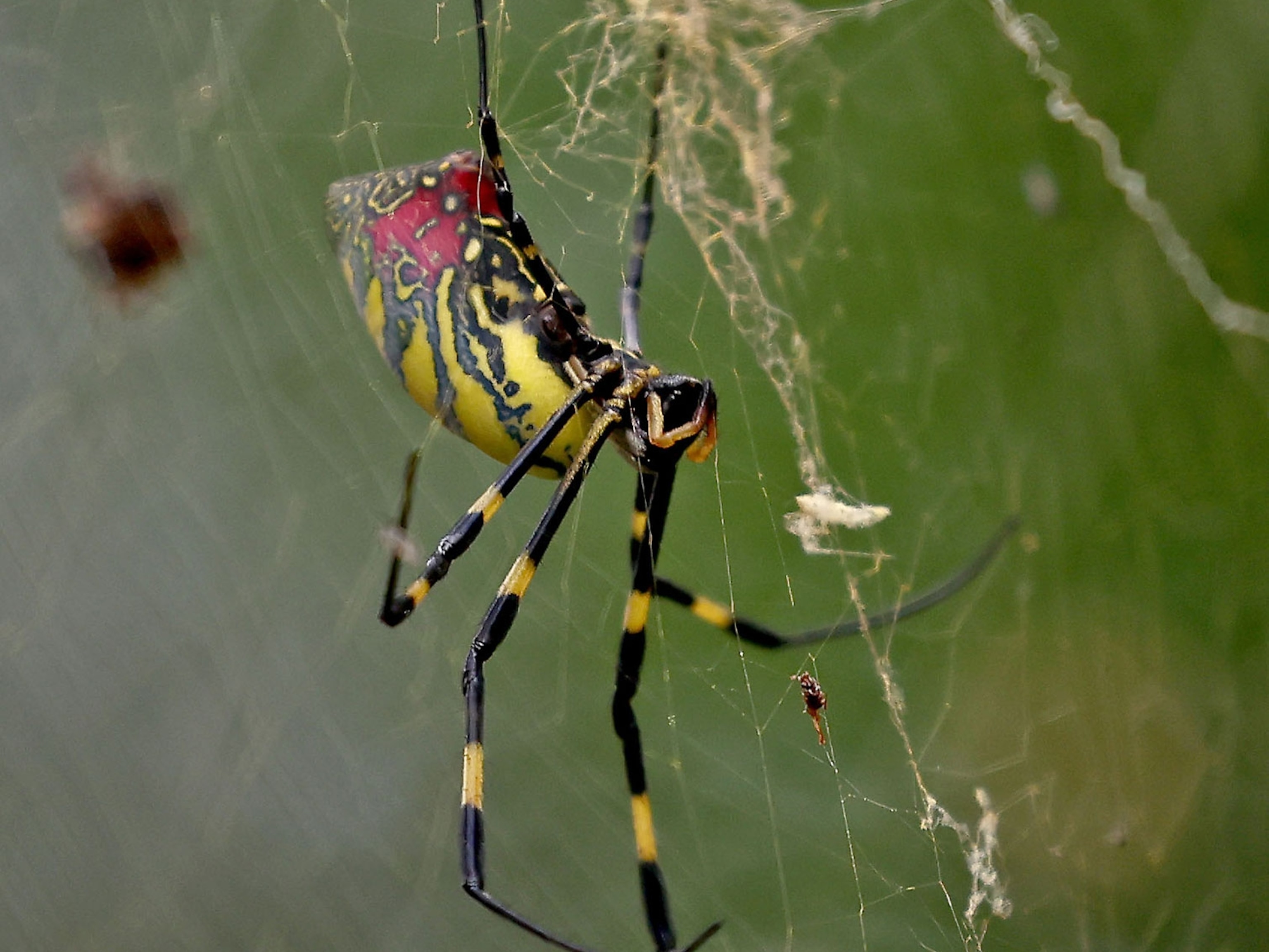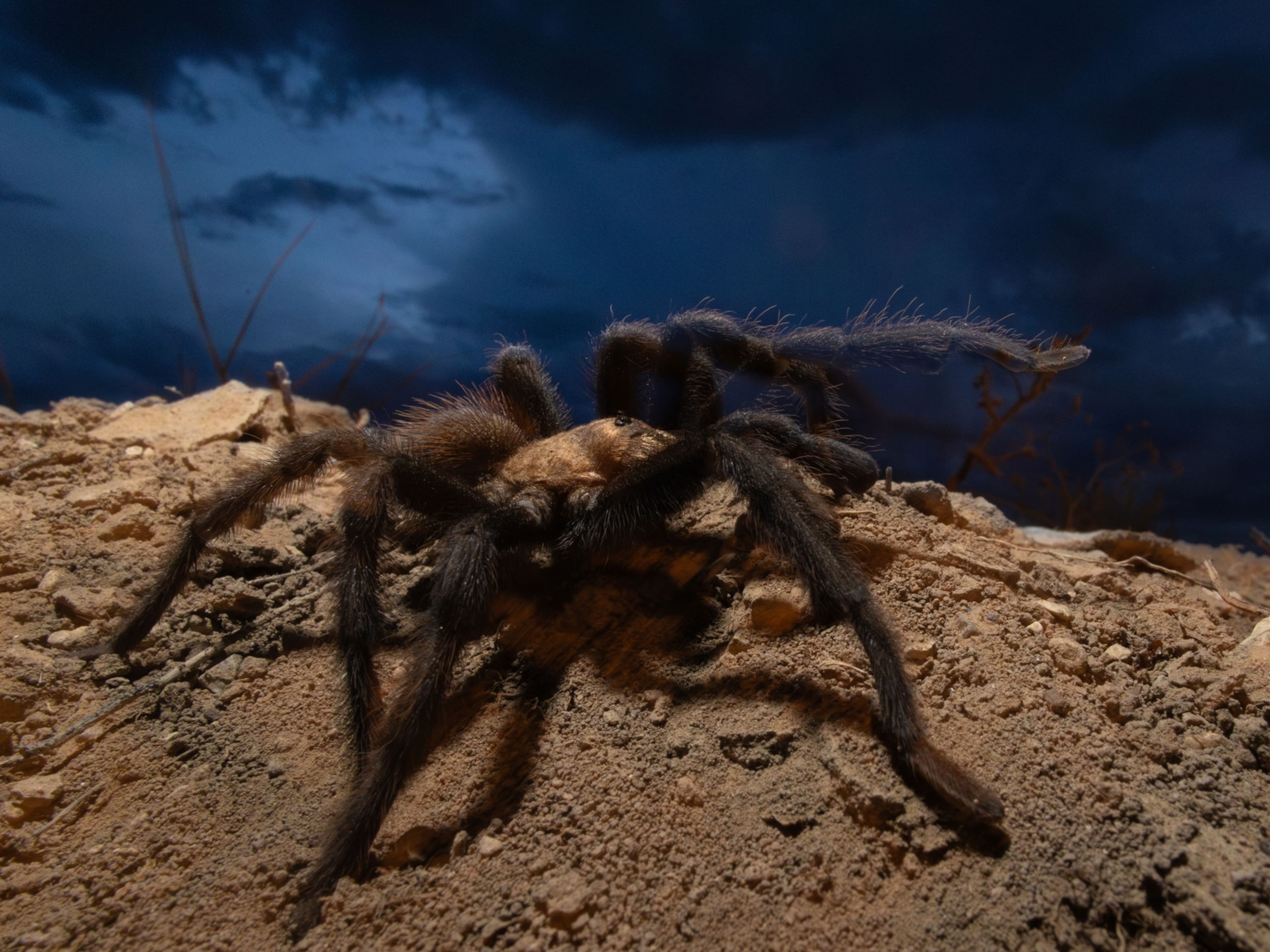
Spiders Listen to Their Webs
A spider's silk web is more than a home. It's also a stringed instrument.
When the early morning sun glints off droplets of dew on the gossamer strands of a spider web, it creates a visual masterpiece. Now scientists have found that an elaborate silk-woven web is also an acoustic tour de force.
The silk can vibrate at a wide range of frequencies, which—when plucked—give the spider vital information about the state of its web and the presence of prey.
"This study is fascinating," said Joyce Wong, a biomaterials scientist at Boston University and an avid cellist who was not involved with the study. "I've worked with spider silk for years, but I've never contemplated its sonic properties." This discovery, she said "has opened up a new line of research and applications that I hadn't thought about."
Compensating for Poor Eyesight
Spider silk has long fascinated scientists for its remarkable combination of strength and flexibility. Most man-made materials have one of these properties, but not the other. Eons of evolution have slowly tweaked the composition of spider silk to create a material that can absorb energy without being overly rigid.
Spiders, however, don't care about high-tech applications of their silk. They weave their webs to catch prey and attract mates. But while humans can generally spot an insect trapped in a web, spiders—which have extremely poor eyesight—can't.
Instead, they appear to rely on vibrations from the silk strands to locate prey and find deformities in the web. As a spider plucks and pulls on the web, sending out ripples in every direction, it can sense the vibrations in each of its eight legs.
"They generate these vibrations to get information," said Beth Mortimer, a doctoral student in the Oxford Silk Group at Oxford University and the lead author of the recent study. "Because spiders have eight legs, they essentially have an ear covering all different directions."
Mortimer's latest work, published yesterday in Advanced Materials, shows how spider silk can transmit such detailed information.

Good Vibrations
In their experiments, Mortimer and other researchers used single strands of silk obtained from two species of web-weaving spiders: Nephila edulis and Araneus diadematus. Spider silk from these representative species, they found, can vibrate at a much wider range of frequencies than many other natural and synthetic fibers.
Imagine the strings on a violin, Mortimer says. "Each string can only be tuned to a few different notes. But a violin string made out of spider silk could be tuned to a tremendous range of different notes."
To measure how spider silk vibrates, Mortimer and her colleagues took an unusual approach: They shined a laser on a piece of silk, then fired a bullet at it.
Spiders determine how the silk vibrates using more prosaic methods. They create transverse waves by bouncing up and down on their web and longitudinal waves by plucking the strands of silk.
Those waves alter the silk's vibrational frequency by tweaking the composition of the silk's proteins and by adjusting the tension of the silk in the web. Together, these techniques can help a spider pinpoint any damage to its webs—and any prey that might have become ensnared.
And because spider silk can vibrate at so many frequencies, the spider can sense movements as small as a hundred nanometers—1/1000 the width of a human hair.
Biology and Biomimicry
Spiders have succeeded evolutionarily. The inherent variability in their silk is one of the major reasons why. It enables a spider to respond to a range of environmental conditions, such as humidity and high winds.
Now that Mortimer and her colleagues have identified some of the vibrational properties of single strands of spider silk, they're working to determine how these may be altered as spiders weave their webs. Besides helping scientists better understand spider biology, that information may also help materials scientists engineer supersensory devices using spider silk, such as hearing aids.
So the next time you see a beautifully woven spider web, remember you're only perceiving half of its beauty. The other half can only be felt.






